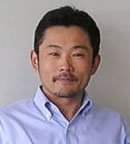
Natsuki YOSHIKAWA
Affiliation : Professor, Niigata University, Japan
Role : Research leader, Japan side
Remarks
Recently, the environmental variation, induced by climate changes and anthropogenic activities, has adversely affected the regional water resource, which is augmenting the worldwide concern about the sustainable water use and directing us to pay more heed toward it. When it comes to water use, we need to appropriately comprehend it in irrigated areas, and the technique of remote sensing is expected to be applicable to the estimation or the identification of the productivity or the land use in this irrigated regions. In particular, time-series satellite imagery, due to its wide coverage and high frequency, makes feasible the land use classification and crop monitoring, exploiting seasonal changes of crops, which have not been achieved ever. However, the spatial resolution of the existing time-series satellite imagery is so relatively coarse that several components of land cover type occur within a pixel, and that the result of conventional classification approaches tends to be erroneous because the internal structure within a pixel is NOT taken into account. In order to obtain the classification map with higher accuracy, it is desired that an approach is to be implemented by which a single class is not assigned to a pixel but multiple cover types are classified with the quantitative proportion with which each class occupies that pixel. In this study, the irrigation area located in the southeast of Turkey was selected as the study site where diverse land cover types including crops, orchard, urban, soils and other miscellaneous classes are mixed, and I’m working on developing the model which can estimate the fractions (proportions) of land cover types within pixels from time-series data acquired from time-series satellites including MODIS and SPOT/VEGETATION by employing the concept of Spectral Mixture Analysis by virtue of its analytical tractability and accepted accuracy. This model could be ubiquitously (anywhere/time, here) used to accurately estimate the land use information, which would lead to the enhancement of the resolution of the existing irrigation area maps or cropping calendars.